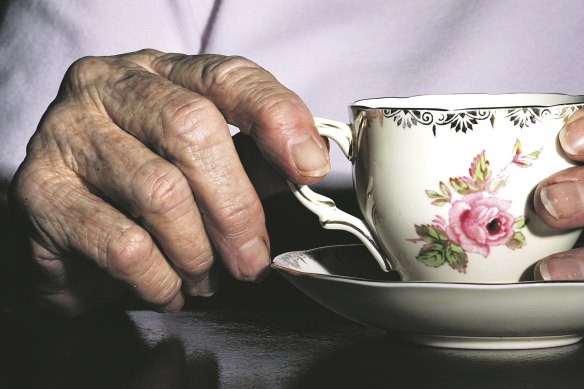As part of the Aged Care Royal Commission reforms, the government introduced quarterly financial reporting into the sector, with the first report covering July to September 2022, published in late February.
And while the report covers the whole sector – with data collected across for-profit, not-for-profit and government providers – it reads like a tale of two industries, with home care delivering low levels of care with high profits and residential aged care delivering substantially more care and making substantial losses.
The new report into the aged care sector reads like a tale of two industries.Credit:Rob Homer
Across the 921 providers of home care, there was a profit of $92.4m for the quarter, which equates to an average profit of $5 per person, per day. The report shows that the majority of home care providers (78.4 per cent) are profitable and the majority of care recipients (76.6 per cent) receive care from a profitable provider.
Home care providers delivered just under an hour of care per person per day (an average of 53.65 minutes) and the average staff costs were $45 per person per day. It should be noted that there is no minimum number of care minutes that need to be provided in-home care.
There is currently $1.61bn in home care package account balances, of which $1bn is government funding. Examination of home care covered home care packages but not other programs such as commonwealth home support.
In contrast to home care, the 805 residential aged care providers lost $465m for the quarter, an average loss of $27 per resident per day. Just under 34 per cent of providers recorded a profit and only 26.8 per cent of residents live in an aged care home that is profitable.
Residential aged care providers delivered an average of 187 minutes of care per resident per day. In addition to the care minutes, residents received an average of 5.6 minutes of allied health and 9.6 minutes of lifestyle activities per day. The median labour cost for the quarter was $173 per resident per day and the average amount spent on meals was $12.40 per resident per day.
Details of the accommodation and hotel-type services provided, which contributed to their financial performance, were not collected in this report. It is also important to note that the new aged care funding model commenced on 1 October 2022 and is not reflected in this report.
Perhaps the most concerning numbers coming out of the report were around the liquidity of the sector which is 0.33, meaning for every $1 of debt they have just 33c of liquid assets, and the capital adequacy which is 0.29, meaning for every $100 of assets they have 71c of debt.
The new funding model is going to need to do some very heavy lifting to bring residential aged care back from the brink. Let’s not forget that residential aged care providers are holding around $32 billion in accommodation deposits that are guaranteed by the government, and in 2021–22, 178 residents were refunded almost $65 million through the guarantee scheme.
Rachel Lane is the principal of Aged Care Gurus and co-author of Aged Care, Who Cares? and Downsizing Made Simple.
Most Viewed in Money
From our partners
Source: Read Full Article


